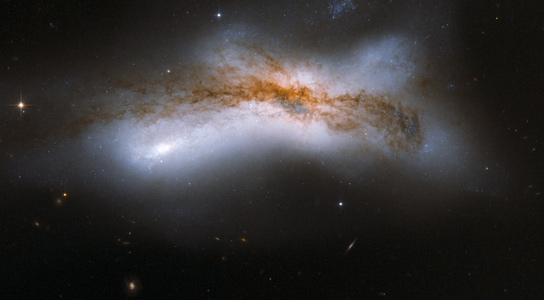
A pair of colliding spiral galaxies in the Pisces constellation (NGC 520).
A new study of the X-shaped radio galaxy NGC 326, which will be published on February 20th in Astrophysics Journal, tries to explain their morphology and some of the features associated with X- or Z-shaped radio galaxies.
X-shaped galaxies are a class of extragalactic radio source that prominently exhibit two, low-surface brightness radio lobes, referred to as the wings, which are oriented at an angle to the active or high-surface-brightness lobes. Both sets of these lobes symmetrically pass through the center of the elliptical galaxy, which is the source of the lobes, giving the radio galaxy an X-shaped morphology.
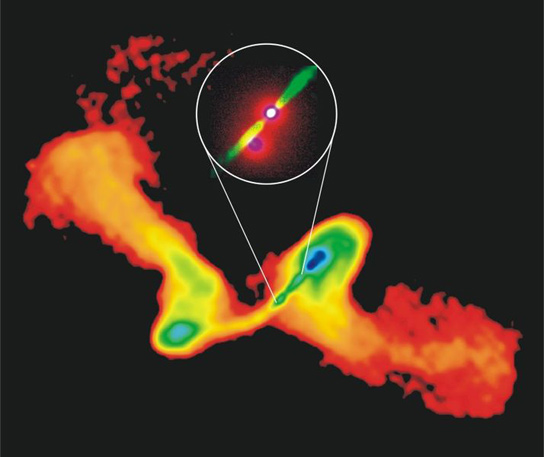
NGC 326 is one of the most prominent X-shaped galaxies and has been the subject of several studies attempting to find an explanation of its morphology through fluid motion or a reorientation of the jet axis.
The study used the Chandra X-ray Observatory to examine the emissions of the radio galaxy. Edmund J. Hodges-Kluck, of the Department of Astronomy, University of Michigan, Ann Arbor, and Christopher S. Reynolds, of the Department of Astronomy, University of Maryland, College Park, found several features of the radio galaxy, including a high-temperature front that might indicate a shock, high-temperate knots around the rim of the radio emission, and a cavity associated with the eastern wing.
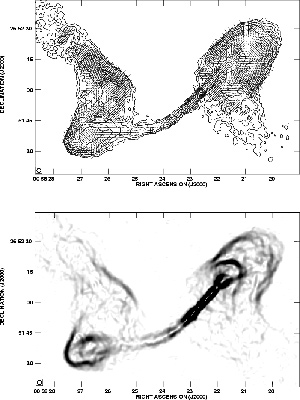
Some of these features allowed them to reconstruct the history of the active galactic nucleus (AGN) outbursts. The active outburst was most likely once a powerful radio source that has since decayed. Some circumstantial evidence points to a reorientation, which could imply the production of the associated wings of NGC 326.
There is an interaction between the radio galaxy and the intracluster medium, the superheated plasma present at the center of a galaxy cluster, and because of the wide separation between the active lobes and wings, the astronomers conclude that X-shaped radio galaxies are excellent ways to study the AGN feedback in galaxy groups, by measuring heating rates associated with both active and passive mechanisms.
Reference: “A Chandra Study of the Radio Galaxy Ngc 326: Wings, Outburst History, and Active Galactic Nucleus Feedback” by Edmund J. Hodges-Kluck and Christopher S. Reynolds, 3 February 2012, The Astrophysics Journal.
DOI: 10.1088/0004-637X/746/2/167

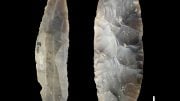

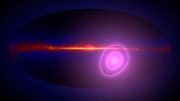





Be the first to comment on "Study of X-Shaped Radio Galaxy NGC 326 Shows Outburst History and Active Galactic Nucleus Feedback"